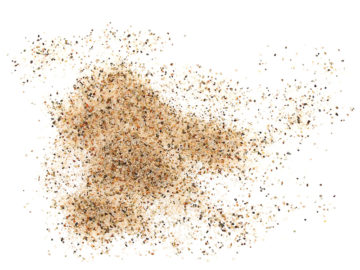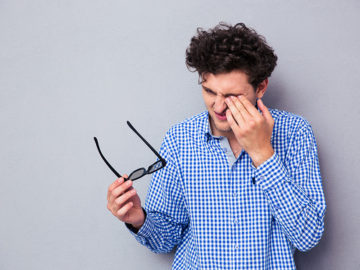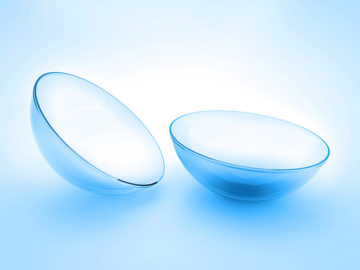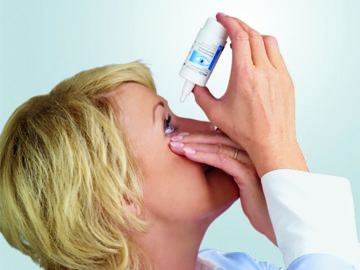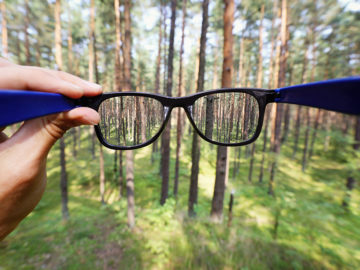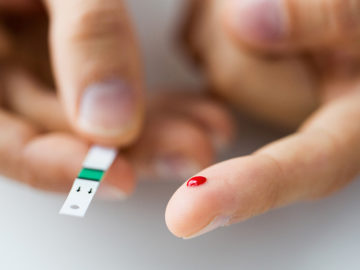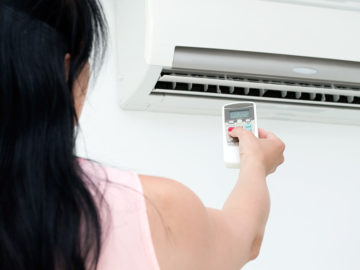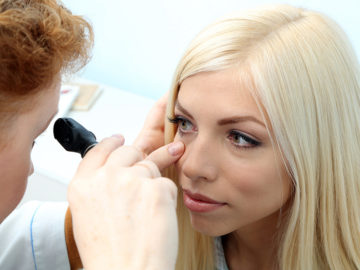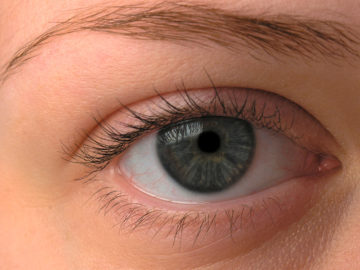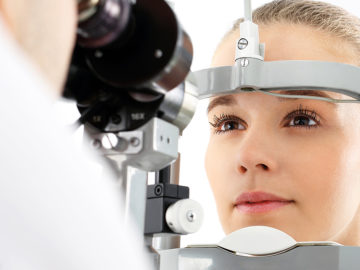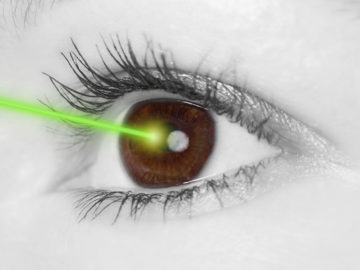Contact lenses and dry eyes
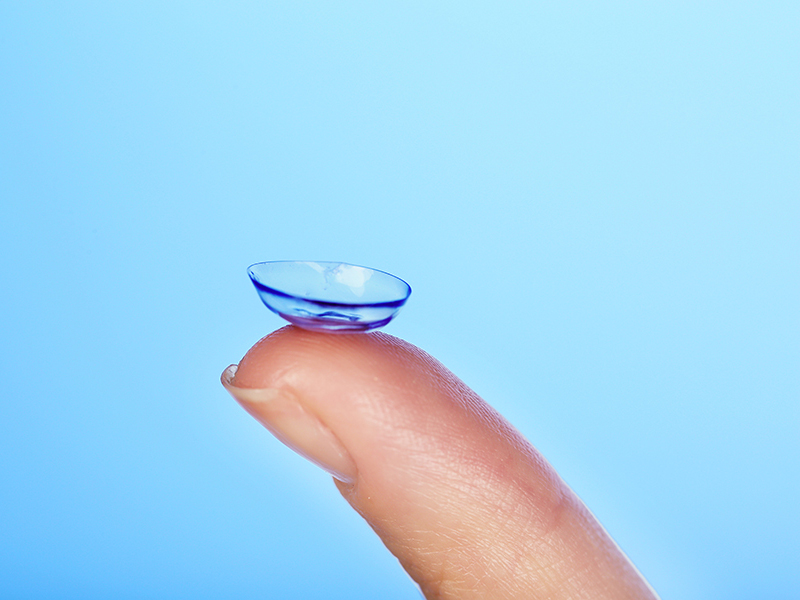
Contact lenses encourage the development of the symptoms of dry eyes.
More and more people are wearing contact lenses on a regular basis; in Germany it is around 3% of the adult population1: And more and more frequently, people are suffering from dry eyes. In part, there is a connection here, as contact lenses can cause and reinforce the symptoms of dry eyes.
The reason for dry eyes caused by contact lenses lies in the fact that the lacrimal fluid cannot be distributed unhindered over the surface of the eye. Ruptures appear in the lubricating film. This can lead to typical symptoms of dry eyes such as itching, burning or redness.
A complete intolerance to contact lenses can develop if the symptoms are ignored. Relief can come from lubricating eye drops. However, you should take note that not all drops are suitable for contact lens wearers.
How contact lenses and dry eyes influence one another
In a healthy eye, the contact lens swims in the tear film above the cornea and the iris. But if there is not sufficient lacrimal fluid present, the tear film breaks up and the contact lenses irritate the surface of the eye. This effect is even stronger if the lenses are not exactly fitted to the eye or have sharp edges because of shoddy manufacturing.
Moreover, unsuitable or low quality contact lenses can reinforce dry eyes – because they remove more liquid from the tear film like a sponge, the eye loses moisture. This is particularly so when the lenses are worn for too long a period. Surprisingly, soft lenses, which have a high water content, remove a large quantity of liquid from the tear film. This is because the lenses lose liquid over time. But because the lens material requires a high concentration of water, the lenses draw the liquid out of the tear film.
What you should pay attention to when wearing contact lenses
Attention should be paid to a few things when wearing contact lenses in order to avoid encouraging dryness of the eyes and also to prevent inflammation as well as other damage to the eye:
- You should be advised by an eye doctor, especially when being fitted for contact lenses for the first time. They can determine the exact strength and curvature for the contact lenses and recommend the suitable type of lens. Moreover, you should have your eye doctor regularly check your eyesight and the general health of your eyes.
- Choose high quality lenses. If you choose soft lenses, it is recommended that they have good oxygen permeability. Lenses with hyaluronan, in particular silicone hydrogel lenses, are often recommended for dry eyes. Hard lenses draw hardly any liquid from the tear film, quite the opposite of soft contact lenses, and are usually therefore better suited to problems with dry eyes. Also applicable in this case: get expert advice from an eye doctor.
- Lubricating eye drops can be used to compensate for a lack of liquid. There are various remedies which can be used in conjunction with contact lenses and thereby stabilise the tear film below the lens. But not all eye drops are suitable for use with contact lenses so you should definitely pay attention to the patient information leaflet in the pack. On no account should eye drops containing preserving agents be used together with contact lenses. Preserving agents can irritate the eyes and contact lenses reinforce this effect. Furthermore, it is advisable also to moisten the eyes with eye drops and eye ointments after wearing lenses or during the night.
- Do not wear lenses for too long at a stretch. If you already suffer from dry eyes, it is recommended that you only wear contact lenses for a few hours and on special occasions, such as going out or for sport. Otherwise, it is preferable to switch to wearing glasses. You should preferably not wear contact lenses when watching television or working at a monitor as these put further strain on the eyes. Also, a day off from wearing contact lenses does your eyes the world of good.
- Thoroughly clean your contact lenses each time after wearing them and use appropriate cleaning media and storage solution. Test to see which remedy you can best tolerate.
- The lenses should not be worn any longer than the manufacturer recommends. So daily lenses should be changed every day and monthly lenses after four weeks. The contact lens containers should also be changed regularly every few weeks so that there is no build up of germs.
- You should definitely avoid wearing contact lenses if you are ill, for example with a cold. There is an increased risk of transferring germs into the eyes. Particular care should be taken in the case of eye diseases such as conjunctivitis. Remove the lenses immediately, as germs can build up extremely well underneath them, and visit an eye doctor.
Interesting fact: all eye drops from the HYLO® EYE CARE range are free from preservatives and suitable for contact lens wearers.
Please read the patient information leaflet in the pack.


